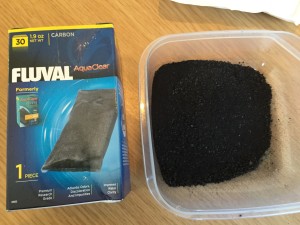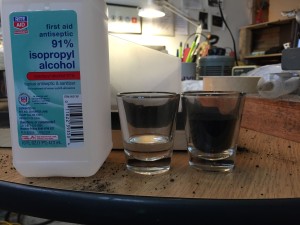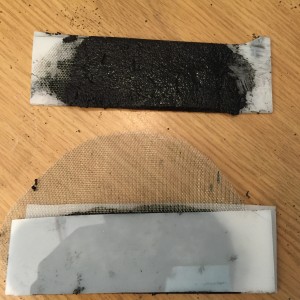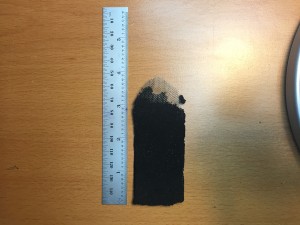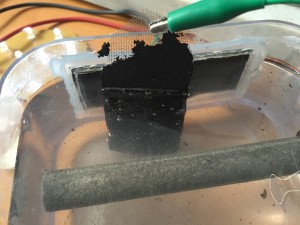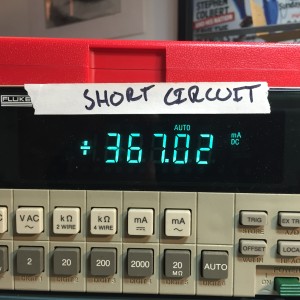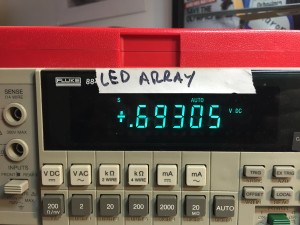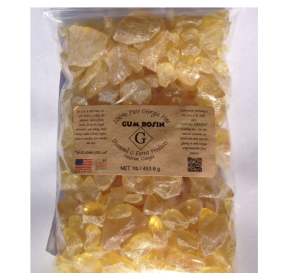An important part of my salt water cell is its carbon electrode. Up until now I have been using a commercially made electrode. Where the magnesium electrode is just a simple rod, the carbon electrode is a little more complicated. It is made up of some form of carbon or graphite, a binding agent, and some form of mesh to hold it in place. I want to be able use regular charcoal from a fire for my carbon electrode, and some non-toxic binding agent. In order to produce consistent results for now, I started with some activated carbon filters for aquariums. After a few minutes in the coffee grinder, I had a fine, and very messy carbon powder. It conductivity was around 130 Ohms which is similar to the commercial electrode.
I mixed the carbon powder with some clear gel kraft glue. I added rubbing alcohol to thin it out temporarily as well.
I then spread the mix over a stainless steel mesh and clamped it in my vice:
It works!
I was amazed to see the magnesium start to fizz when I dropped it in. The only issue with it is that the kraft glue does not hold up underwater for very long. I was a little stumped since I wanted to use a natural glue for the binding agent, but most are water-based. I started researching natural glues that were waterproof. There were many interesting glues out there.
Here is the battery ratings with my charcoal electrode:
One recipe that caught my eye was pine sap glue. The recipe I came across after a quick google search can be found here:
http://willowhavenoutdoor.com/general-survival/how-to-make-pine-resin-glue/
Surprisingly the only ingredient other than pine sap is charcoal. I’m now wondering if I can produce an all natural electrode by increasing the amount of charcoal called for? I ordered some pine resin off amazon.com to start experimenting with.
